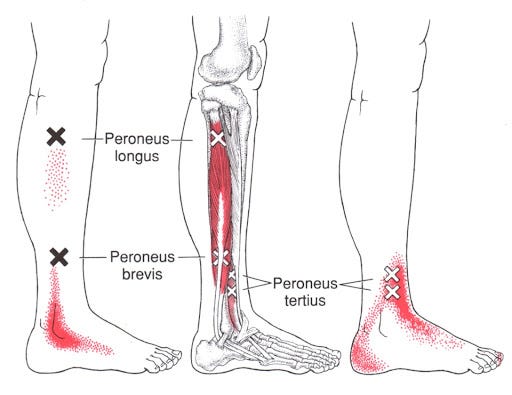Healed But Still Hurting?
Treating Myofascial Pain with Neuromuscular Therapy and the ‘Hurts Good’ Approach
Neuromuscular therapy is right for you if:
You have persistent muscle pain, but orthopedic tests show no injury
Other treatments haven’t worked
You want to prevent future injuries
You feel you're not performing like you used to
You want to improve range of motion, strength, and endurance
You simply want to feel your best
If any of these apply to you, it is likely that your symptoms are caused by a disconnection between your brain and your body, rather than purely an injury to soft tissue.
Pain is the universal stop signal. When you experience injury, your brain sends pain back to the injured area to motivate you to stop moving long enough for your tissues to heal. Pain only subsides when the brain, not the body, thinks it is no longer injured. Surrounding muscles become so fatigued and tense while compensating for your injury that even after tissues heal, the brain cannot differentiate between a healed state and an injured one. You are stiffer, weaker, and tire more quickly than before your injury. Healed, yet still hurting, you are experiencing myofascial pain and dysfunction. Trigger points that formed in your muscles during the healing process now prolong your discomfort and thwart your best efforts to restore easeful movement. Until the brain and body learn to communicate properly, you will not be at your best.
Neuromuscular therapy squashes this injury mindset by soothing trigger points and manipulating your muscles to move freely. In so doing, the brain learns that your body is healed.
Myofascial Pain On a Cellular Level
The diagram below illustrates the “energy crisis” model and explains the physiology underlying the formation of trigger points and myofascial pain.

When they contract, muscle fibers become shorter and wider, compressing surrounding capillaries. Muscle contraction requires energy in the form of glucose, which travels in the blood. Sustained muscle contraction (such as in a fatigued, splinted, or overworked muscle) occludes capillaries. As the energy required to sustain muscle contraction increases over time, so too does the occlusion of blood flow. Nociceptive nerve cells sensitize the starving muscle fibers, now so lacking in energy that they cannot relax (energy is required to stop muscle contraction, too). Trigger points form as this positive feedback loop carries on.
Below is an example of trigger point referral pain in the peroneals group. These symptoms are common among an injury I see frequently: a lateral ankle sprain.

When you sprain an ankle, the joint moves into an extreme range of motion. Ligaments stretch so far that they tear. Muscles may spasm as they try in vein to control the force traveling through the joint. The brain further tightens these muscles to create a protective splint around the damaged ligaments. Even after the ligaments have healed, the brain continues to protect the ankle as it holds tension in the surrounding muscles. The muscles tire from relentless contraction, succumbing to the “energy crisis.” The ankle remains weak and stiff until the brain-body miscommunication is resolved.
How Talk to Your Brain
In order to restore full function of the ankle, we must reprogram the brain.
Many of you who seek sports, deep tissue, or fix-it style massage assume that deep tension and discomfort is best met with equally intense pressure and force into your muscles. This approach produces unfavorable results. Your brain thinks that your body is injured. If I give you the painful pressure you think you need, your brain will receive the same signal that perpetuates your myofascial pain in the first place. We are trying to create a healthy dialogue between brain and body, not jackhammer our way through tension.
A hurts good pressure is conducive to conversation. This intensity evokes trigger point referral (muscle talking to brain) without creating pain from the pressure itself. Sensation from a palpated trigger point will spike briefly, and then decline steadily over the course of a minute or two as the muscle relaxes (brain talking to muscle). The hurts good becomes, simply, good. That’s your brain and body talking again.
Neuromuscular Reeducation and Symptom Prevention
Once symptoms are reduced, our treatment goal becomes to keep your symptoms away.
After clearing a trigger point, your brain is in a neuroplastic state, ready to learn. No longer under the false impression that the body is injured, we reeducate the brain by giving it an example of normal function by having you resist a simple movement — such as bending your elbow. Resistance gives the brain clear sensory feedback: brain says move, muscle moves against force, brain knows that muscle responds. No more miscommunication. You’ve successfully rewired your brain.
If you are among the 85% of people who experience myofascial pain, know this: you are not broken — your brain and body are just a little out of sync. Neuromuscular therapy uses a precise “hurts good” approach to address myofascial pain symptoms, correct compensatory tension patterns, and restore easeful movement. Book a session today to experience how this powerful approach can make all the difference.
Want to learn more? Read my post on the value of educated touch in massage — and don’t forget to subscribe for more insights on anatomy and wellness.



